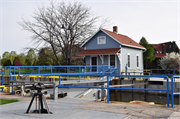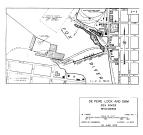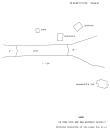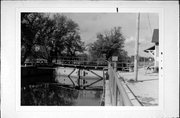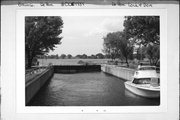Property Record
DE PERE LOCK AND DAM
Architecture and History Inventory
| Historic Name: | |
|---|---|
| Other Name: | |
| Contributing: | Yes |
| Reference Number: | 1889 |
| Location (Address): | DE PERE LOCK AND DAM |
|---|---|
| County: | Brown |
| City: | De Pere |
| Township/Village: | |
| Unincorporated Community: | |
| Town: | |
| Range: | |
| Direction: | |
| Section: | |
| Quarter Section: | |
| Quarter/Quarter Section: |
| Year Built: | 1936 |
|---|---|
| Additions: | |
| Survey Date: | 1988 |
| Historic Use: | dam/lock |
| Architectural Style: | NA (unknown or not a building) |
| Structural System: | |
| Wall Material: | Concrete |
| Architect: | |
| Other Buildings On Site: | |
| Demolished?: | No |
| Demolished Date: |
| National/State Register Listing Name: | De Pere Lock and Dam Historic District |
|---|---|
| National Register Listing Date: | 12/7/1993 |
| State Register Listing Date: | 4/10/1992 |
| National Register Multiple Property Name: | Waterway Resources of the Lower Fox River |
| Additional Information: | Photo code #2: FCS 3/32 Related Buildings: Dam, lockkeeper's house, lock shack. The present lock, which is oriented on a NW/SE axis was completed in 1936 (1). It replaced one of composite construction. The 146 by 36 foot lock chamber and wing walls are comprised of concrete, the sides of which contain a pipe railing. Each of the lock's four miter gates is constructed of steel. Adjacent to each gate is a concrete platform that contains a tripod. A vertical shaft extends the height of the tripod. A handle is fixed to the top of the shaft, while the bottom of the shaft contains a gear that drives a horizontally placed spar, the end of which is attached to a lock gate. (It is a horizontal rack and pinion system). Depending on which way the handle is turned, the spar is either taken in, thus opening the lock gate, or it is pushed out, in which case the gate closes. The chamber is flooded by six butterfly valves that are set in the floor of the lock, immediately upstream from the structure. As the valves are opened, water passes down into a culvert with a 90 degree turn, which then directs it under the upstream sill and straight into the chamber. Each valve is adjusted by a geared mechanism that sits on the lock's coping. A metal shaft connects the valve to the adjusting mechanism, three of which are placed adjacent to each of the upstream corners of the lock. The chamber is discharged through six small butterfly valves found at the bottom of two downstream gates. There are three valves per gate. These valves are operated by the levers atop each gate. The gates contain a cat-walk that facilitates moving from one side of the lock to the other. The lock provides 8.9 feet of lift as it moves crafts from the 586.66 feet above sea level upper pool to the 577.3 foot above sea level lower pool. It can be filled in two minutes and forty-five seconds, while it can be discharged in two minutes and eight. |
|---|---|
| Bibliographic References: | C.O.E. (1) Annual Report of the Chief of Engineers, 1936: Extract- Report upon the Improvement of Rivers and Harbors in the Milwaukee, Wis., District (Washington, D.C.: Government Printing Office, 1937), 1189. |
| Wisconsin Architecture and History Inventory, State Historic Preservation Office, Wisconsin Historical Society, Madison, Wisconsin |

